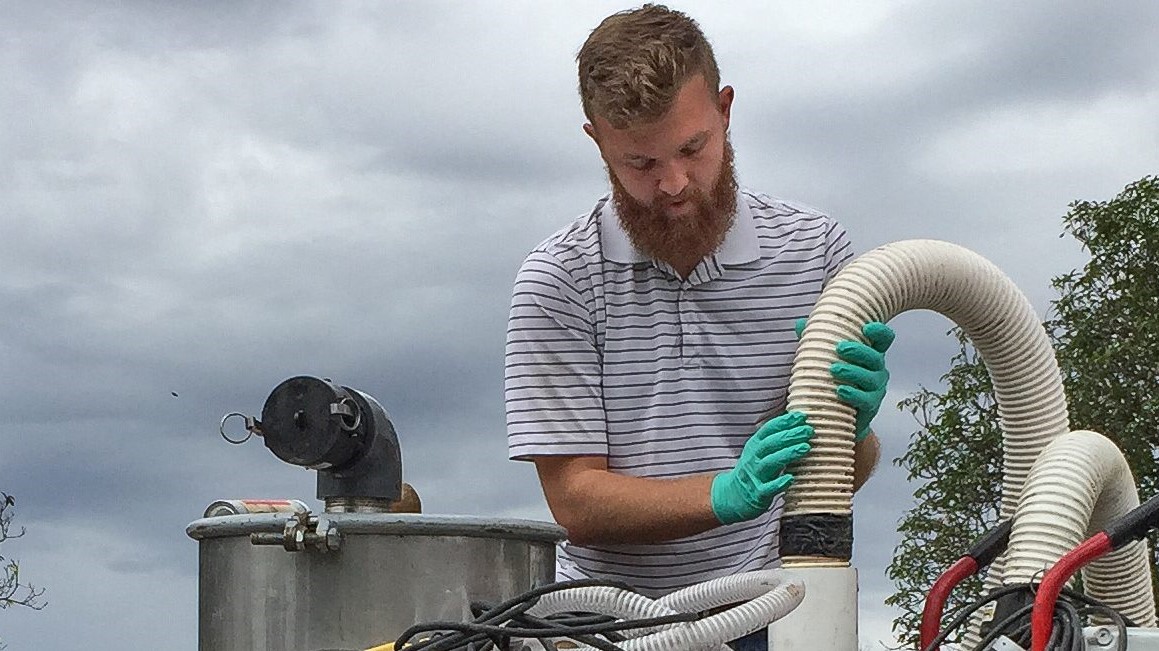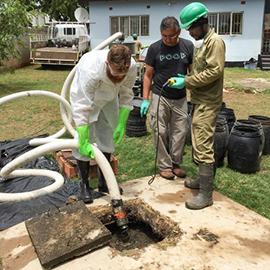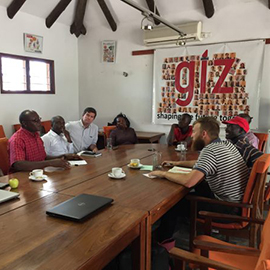
Originally published by the Department of Civil, Construction, and Environmental Engineering
Nearly two billion people on earth use pit latrines as the primary way to defecate and urinate. These pits fill up quickly with human waste and large amounts of trash including rags, plastic bags, bottles, and hair. People often remove waste manually, exposing workers to a host of human pathogens without sufficient protection. While mechanized ways to remove raw sewage from latrines exist, these devices are often expensive and clog frequently from high volumes of garbage.

In fall of 2017, Global WaSH Cluster lead Dr. Francis de los Reyes received $1.2 million from the Bill and Melinda Gates Foundation to improve and test the market for a novel pit latrine emptying device, the Flexcrevator. The aim of the project is to redesign the prototype machine so that it is widely adopted by pit emptying service providers and entrepreurs, and also ensure that the enhanced Flexcrevator can be economically manufactured locally. The Flexcrevator is the newest generation of a series of prototypes, with the first design invented by NC State alumnus Tate Rogers (BS’11 MS’13) in 2011. The Flexcrevator is comprised of two main components – a vacuum cube and an external trash excluder. Fecal sludge is vacuumed into a drum via hose which is attached to an external trash excluder. The trash excluder in its current version is a rotating auger that pushes trash away during fecal sludge pumping.
This project requires diverse expertise from around the world. The NC State team works closely with Catapult Design, a Colorado based non-profit design firm with a rapid prototyping machine shop in Nairobi. Tate Rogers returns to the project as a consultant from Triangle Environmental Health Initiative (Tri-EHI), a company he founded in 2017. Dr. de los Reyes also set up partnerships and field testing sites across the African continent.

The team traveled to Lusaka, Zambia to perform initial testing with German development agency, Deutsche Gesellschaft für Internationale Zusammenarbeit (GIZ) last November. The group interviewed stakeholders including pit latrine emptiers, members of the Lusaka city council, local utilities and private business owners. “Everyone we talked to emphasized the need to keep the process as hygienic as possible, so we are working with our design partners both here in the U.S. and in Nairobi to do some design adjustments, rapid prototyping, and more field testing.” said Jocelyn Tsai, Global WaSH Cluster Program Coordinator. “We are also collaborating closely with consultants at Tri-EHI to assess the market for our unique product.”
Plans are to return to Zambia in the spring of 2018 to showcase the final design and put it through another round of intense field tests.
MORE ABOUT THE WaSH CLUSTER
The Global Water Sanitation and Hygiene (WaSH) faculty cluster led by Dr. Francis de los Reyes from the Department of Civil, Construction, and Environmental Engineering includes researchers from the College of Agriculture and Life Sciences, the College of Humanities and Social Sciences, and the College of Natural Resources. The goal of the Global WaSH cluster is to address water and sanitation issues by developing new technologies that are context sensitive, practical, and take advantage of developments in energy, environmental processes, materials science, data technologies, design and ecology. Advances in public health and environmental research are required in an interconnected world with increasing population and environmental pressures. Find out more about the Global WaSH cluster and the diverse group of scholars who are part of this group here.